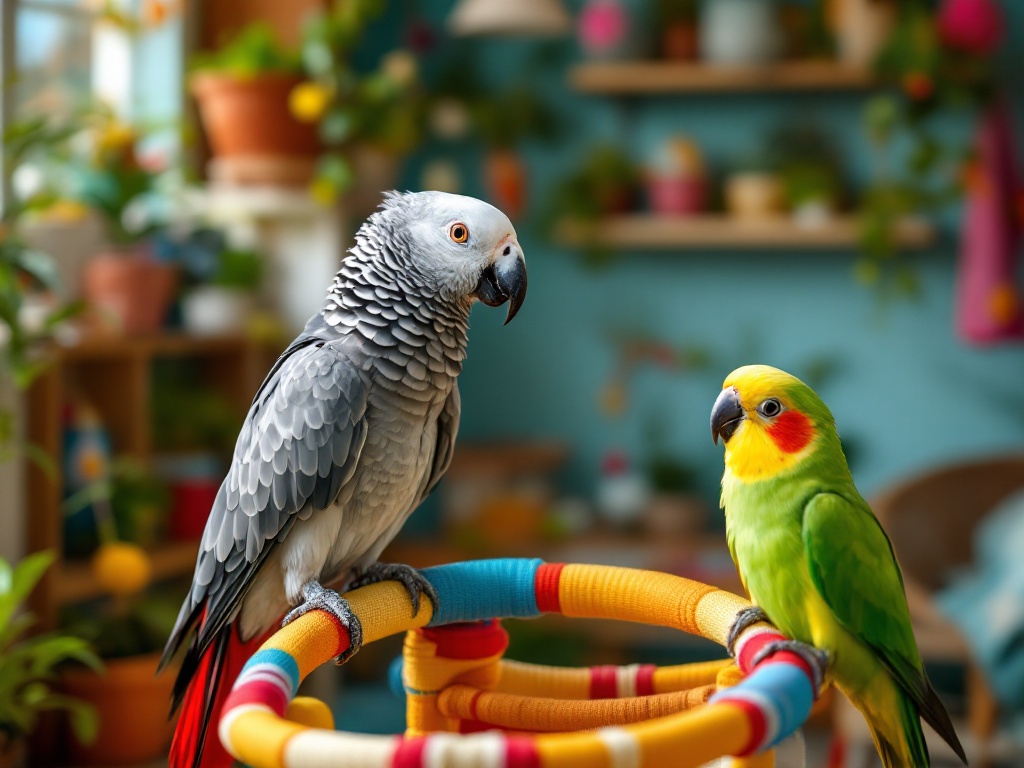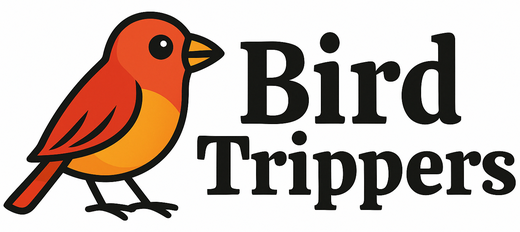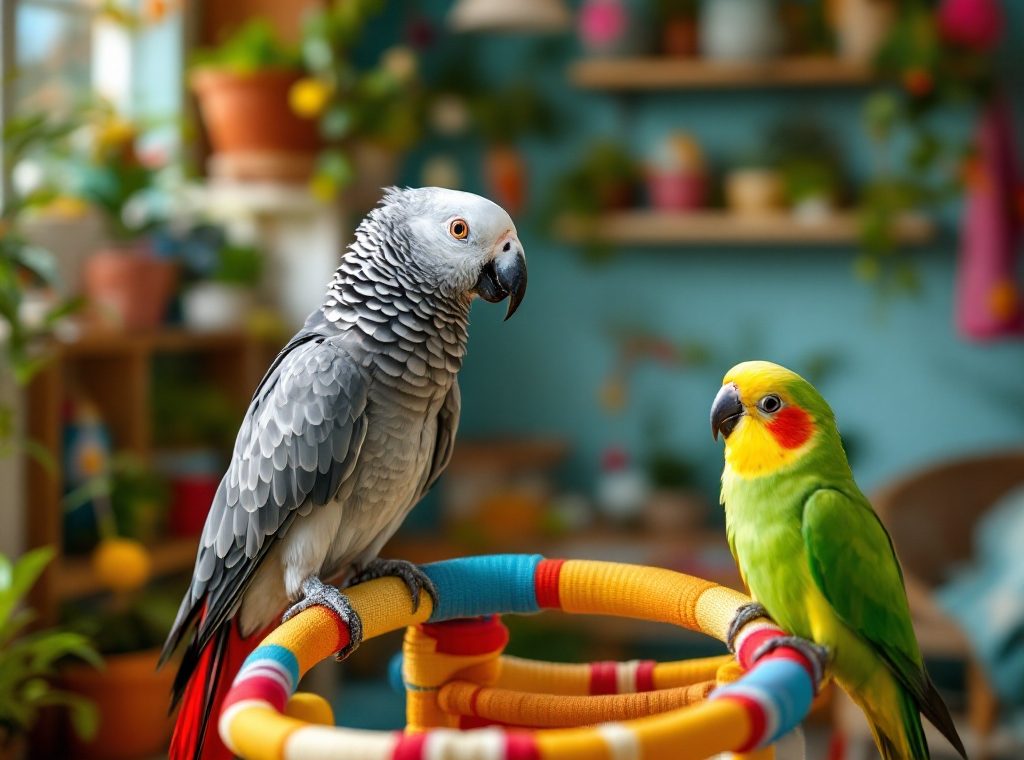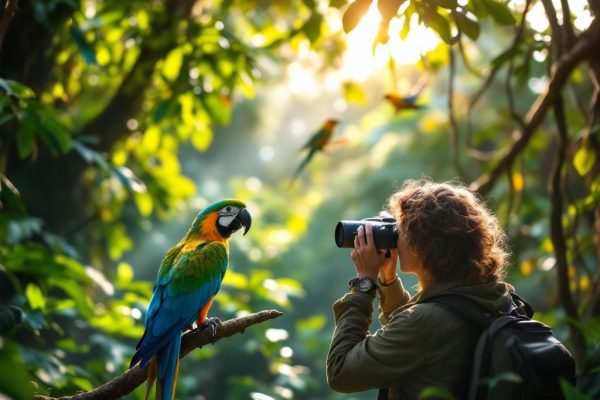What Birds Can Talk: Teach Your Parrots to Speak
Discover the fascinating world of talking birds! From African Greys with vocabularies rivaling a toddler’s to the surprisingly articulate budgie, certain bird species possess an incredible talent for mimicking human speech. Learn what makes these feathered friends so unique, explore popular talking bird species like the Yellow-naped Amazon and the gentle Cockatiel, and uncover the secrets to unlocking your bird’s talking potential through training and socialization. Unleash the chatterbox within your feathered friend – start reading now!
Important information

- A bird’s talking ability depends on species, genetics, age, personality, and environment. African Greys, Yellow-naped Amazons, and Budgerigars are known for their mimicking skills.
- Regular interaction, positive reinforcement, and a stimulating environment are crucial for a bird’s speech development. Start training young with simple words and phrases, repeating them often.
- Talking birds offer unique companionship, entertainment, and a lively atmosphere. They can learn many words and phrases, strengthening the bond with their owners.
- Bird ownership requires significant responsibility, including specialized care and attention. Consider their potentially loud vocalizations before getting one.
- Patience and consistency are key to teaching a bird to talk. Some learn quickly, while others take more time. Make training fun and engaging.
Understanding Talking Birds and Their Speech Abilities
A bird’s capacity for speech depends on genetics, species, and environment. Many birds vocalize, but some excel at mimicking human speech, making them popular companions. These include:
- african Grey Parrots,
- budgerigars,
- cockatiels.
Their talent stems from a unique vocal organ called the syrinx. Nurturing their abilities requires social interaction, mental stimulation, and consistent training, especially when young. African Grey Parrots are naturally social and intelligent, contributing to their exceptional mimicking skills. A stimulating environment and regular human contact are crucial for any bird to reach its full talking potential.
What Makes a Bird Capable of Talking?
Several factors influence a bird’s talking ability, including its species, age, personality, and environment. Younger birds generally learn more quickly. Some species are known for their talking abilities. These include African Greys and Yellow-naped Amazons, which are renowned for their extensive vocabularies. However, individual birds, even within these species, vary in their speaking prowess. Personality plays a significant role in a bird’s ability to talk.A stimulating environment with regular human interaction is crucial for a bird’s language development. Consistent training and socialization further enhance its learning. Exposure to human speech is particularly vital. The more a bird hears, the more it might learn to mimic.
The Role of Training, Interaction, and Socialization
Interaction and exposure are key to a talking bird’s development. Regular interaction fosters learning and socialization with humans exposes them to language, encouraging vocalization. These factors significantly impact a parrot’s speech development.
Popular Talking Birds and Their Vocal Abilities
African Grey Parrots are renowned for their intelligence and exceptional talking ability, capable of learning hundreds of words and even understanding their meaning.
Yellow-naped Amazons are also highly social and articulate, quickly picking up phrases and songs with remarkable clarity.
While small, Budgerigars (or budgies) are surprisingly smart, learning numerous words and phrases, which contributes to their popularity as pets.
Gentle and affectionate Cockatiels can also learn a surprising vocabulary, often showcasing their whistling skills and mimicking other sounds.
Quaker Parakeets, known for their sociability and adaptability, are excellent beginner birds due to their quick learning and ease with humans.
The beautiful Ring-necked Parakeet can mimic entire sentences and has a playful nature.
Indian Ringneck Parakeets are notorious for repeating words and phrases they frequently hear, forming strong bonds with their owners.
Although not parrots, Myna birds, a type of starling, are proficient talkers, mimicking various sounds, including human speech and phrases, and are known for their playful personalities.
African Grey Parrot: The Most Intelligent Talker
African Grey Parrots are renowned for their exceptional intelligence and are considered the most articulate talking birds. Research suggests they can develop a vocabulary of nearly 1,000 words, making them highly engaging companions. These quick learners easily acquire new words and phrases, mimicking sounds they hear regularly. Beyond their impressive speech, African Greys also possess remarkable problem-solving abilities. They require considerable attention and mental stimulation.
Yellow-naped Amazon: Exceptional Talkers
Yellow-naped Amazons are renowned for their exceptional talking abilities, often considered among the best talking parrots. Their sociable personalities make them wonderful companions, and their talent for mimicking sounds contributes to their popularity as pets. These intelligent birds can learn a wide array of sounds and phrases, developing surprisingly extensive vocabularies.
Budgerigar: Intelligent and Social Companions
Budgerigars are wonderful pets, known for their intelligence and sociability. These charming birds can learn to speak, picking up both short phrases and complex sentences. Impressively, a budgie even holds the world record for the largest avian vocabulary, a testament to their remarkable cognitive abilities.
Cockatiel: Gentle and Vocabulary Rich
Cockatiels are gentle birds, renowned for their impressive vocabularies, often exceeding 200 words and phrases. This remarkable ability makes them fantastic, interactive companions who readily engage with their human friends. Their talkative nature contributes to their popularity as beloved pets, and they thrive on social interaction.
Quaker Parakeet: Excellent for Beginners
Quaker parakeets’ sociable nature and ease of care make them excellent companions, especially for beginners. These intelligent birds can learn an impressive vocabulary of 50 words or more, including complete phrases.
Ring-necked Parakeet: Full Sentence Mimicry
Ring-necked parakeets are known for their remarkable ability to mimic sounds, including entire sentences. Their intelligence makes them engaging companions, capable of learning a variety of phrases and sounds. These birds can mimic not only human speech, but also other environmental sounds. Individual parakeets vary in their talkativeness; some are much more vocal than others.
Indian Ringneck Parakeets: Notorious Talkers
Indian Ringneck Parakeets are renowned for their remarkable talking ability. They often master a surprisingly extensive vocabulary. These intelligent birds can even mimic complete sentences, making them incredibly popular companions.
Myna Bird: Proficient in Learning Words
Myna birds are renowned for their exceptional mimicry, capable of learning an impressive vocabulary of up to 100 words. Their sociable nature further enhances their appeal as engaging pets, as they thrive on interacting with their owners.
How to Teach Your Parrot to Talk
Forge a strong bond with your parrot through frequent interaction and socialization. This connection is crucial for effective learning.
Start with simple words, repeating them clearly and often within a relevant context.
Use positive reinforcement, such as treats, praise, or a gentle head scratch.
Reward any attempts to mimic sounds or words.
Keep training sessions short, engaging, and fun to maintain your parrot’s interest.
Be patient, as learning times vary; some parrots talk quickly, while others require more time.
Effective Training Techniques
- Repetition is crucial for quick learning, repeat words and phrases often.
- Positive reinforcement with treats and praise, especially during vocalization attempts, motivates learning.
- Regular interaction, including frequent talks and training sessions, strengthens your bond and accelerates learning.
Importance of Consistent Interaction
Regular interaction with your talking bird is crucial for its development, strengthening your bond and providing essential learning opportunities. Through these interactions, your bird practices vocalizations and expands its vocabulary. Dedicated time with your feathered friend encourages new word acquisition. Consistent exposure to language through frequent interaction is vital for its overall progress and well-being.
Building a Bird’s Vocabulary
Teaching your feathered friend new vocabulary requires patience and an engaging environment. Introduce words and phrases frequently, using repetition and positive reinforcement to encourage your bird to mimic you. Keep in mind that learning speeds differ based on species, age, and individual personality. Some birds might pick up new words within weeks, while others could take months or even years. A positive and stimulating learning environment is essential for success. Here’s a step-by-step guide to help you teach your bird new words:
Create a Positive Learning Environment. Choose a comfortable and quiet space where your bird feels safe and relaxed. Minimize distractions to help your bird focus on your voice.
Start with Simple Words and Phrases. Begin with short, easy-to-pronounce words like “hello,” “goodbye,” or the bird’s name. Gradually introduce new words and simple phrases.
Use Repetition and Positive Reinforcement. Repeat the chosen words and phrases frequently throughout the day. When your bird attempts to mimic you, offer praise, treats, or head scratches as positive reinforcement. Positive feedback encourages them to continue learning.
Be Patient and Consistent. Learning takes time and patience. Don’t get discouraged if your bird doesn’t pick up new words immediately. Stay consistent with your training, and celebrate even the smallest successes.
Make it Fun! Use toys, games, and interactive activities to keep your bird engaged and motivated. Associate words with actions or objects to help your bird understand their meaning.
Benefits of Owning a Talking Bird
Talking birds make wonderful companions, offering enriching interactions and endless entertainment with their mimicry and learned phrases. A talking bird’s communication strengthens the bond with its owner, creating a uniquely rewarding relationship. These intelligent creatures constantly learn and adapt, providing ongoing engagement and amusement. Their playful nature brightens any home, and their responsiveness creates a lively atmosphere. Interacting with these feathered friends can reduce stress and improve overall well-being. A talking bird’s voice can ease loneliness and foster a sense of connection. Teaching them to talk is a fulfilling experience, cultivating patience and understanding in their human companions.
Companionship and Entertainment
Talking birds make wonderful companions, mimicking human speech and other sounds. This entertaining interaction fosters a strong bond between bird and owner. Their playful nature brightens any home, creating a lively atmosphere. However, bird ownership is a significant responsibility, requiring specialized care and attention. Their vocalizations can be quite loud, which isn’t ideal for everyone. But for the right person, a talking bird offers unique companionship and immense joy.
Benefits of Owning a Talking Bird
- Unique companionship, fostering a strong bond through interactive mimicking of sounds and speech.
- Lively atmosphere, brightening your home with their playful nature.
- Source of immense joy, offering a fascinating and enriching experience for the right owner.
Things to Consider Before Getting a Talking Bird
- Significant responsibility, requiring specialized care and attention.
- Loud vocalizations, which might not be suitable for all living situations.
Why Talking Birds Make Delightful Pets
Talking birds are wonderful companions, offering both interaction and entertainment. Their mimicry skills are truly impressive. Some species known for their remarkable speech abilities include:
- african grey parrots,
- amazon parrots,
- budgerigars.
These social creatures form strong bonds with their owners, making them delightful pets. Owning a talking bird requires dedicated care and commitment. However, the rewards are immense for those willing to put in the effort.

















